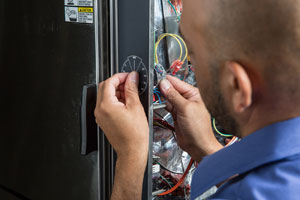In order to get the most out of your equipment, it’s important to be knowledgeable about all the parts available to you. Learn how OEM parts can save you, the operator, money, time and labor.
 An interview with Ken Beasley, president, Heritage Service
An interview with Ken Beasley, president, Heritage Service
Q. Explain the difference between OEM and OCM parts.
Ken Beasley: OEM stands for "original equipment manufacturer". An OEM part is a part supplied by the original equipment manufacturer. OCM is "original component manufacturer". That would be the manufacturer that made the part that the OEM used in building their equipment. Sometimes people will refer to an OCM as a "direct source" part; in other words, they directly sourced it from the person who made it.
There's another type of part called the generic. The generic part is made by a different manufacturer that tries to mimic the look and functionality of the OEM part.
What's the difference between the OEM part and OCM part? Generally, they're the same. However, there are instances where OEM parts are tested for higher tolerances, or an OCM will sometimes make a part that has different tolerances or specs.
Q. Then why is it important to use OEM parts?
 Using OEM parts helps equipment perform at peak efficiency.
Using OEM parts helps equipment perform at peak efficiency.
KB: First, if you're an authorized servicer, you've been trained by the manufacturer to service their piece of equipment. Part of your commitment in representing that manufacturer is that you're going to use OEM parts. Second, from a repair standpoint it takes out one variable doing the repair, because you know it's the same part you took out. Also, you've got better support from the OEM when there are issues. If parts fail, the OEM is very good about standing behind the parts they supply.
Q. How can using OEM parts save the operator money, time or labor?
 OEM parts must be used to maintain warranties.
OEM parts must be used to maintain warranties.
KB: OEM parts must be used to maintain warranty. If it's discovered you're using OCM or generic parts, your warranty can be voided.
Manufacturers are constantly assessing the quality of their components. By buying the part from the OEM, when they upgrade or make design improvements to the part, the customer gets the "latest and greatest" part for that piece of equipment.
Equipment today is more complicated, not less. With more components, you gain efficiencies and performance. The downside is you've got more opportunities for failure. As more parts are put into equipment, knowing that your part is the one made for that manufacturer to their specs is becoming even more important.



